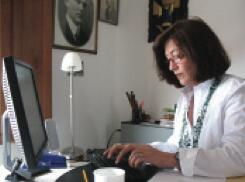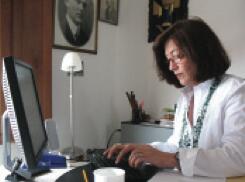IN MEMORIAN: The Legacy of Virginia Pérez Raton
The lesson left behind by Virginia Pérez Ratón, the woman who, from San José de Costa Rica, broadened the dimension and the practices of contemporary art in Central America and the Caribbean Region, was that of somebody who is capable of conceiving new systems of creation and relation through a vision that gave rise to alternative routes for an entire collectivity.

She directed the ARS TEOR/éTica Foundation in San José, Costa Rica, as of 1999, when she founded it jointly with Rolando Castellón, Paulo Herkenhoff, Bruno Stagno and Claude Tournon as an independent, not for profit project, the aim of which was “the exhibition, investigation, knowledge, dissemination and promotion of the regional artistic practice of Central America and the Caribbean Region; the establishment of links with the international art scene, and the generation of a space for critical thinking.”
After having been a literature teacher for nearly a decade, she left the university and devoted herself to art, although in the late 1980s motivated by the situation of the people who had been displaced as a result of the wars that devastated Central America she worked for the Office of the United Nations High Commissioner for Refugees in Costa Rica. After majoring in Graphic Arts in Paris and Strasbourg, she began to study and expand the international contemporary art scene. In 2009, she presented Federico Herrero’s (Costa Rica) exhibition, Amansalva, and Pintadera, a posthumous tribute to Gustavo Araujo (Panama, 1965-2008).
In her capacity as Director of the Museum of Contemporary Art and Design of Costa Rica (1994-1998), she organized exhi- bitions such as Mesótica Centroamericana, which traveled to Europe between 1997 and 1999. She created the National Board of Curators in 1994, and she was regional curator for Central America and the Caribbean at the 24th Sao Paulo Biennial in 1998, representing the project “Central America and the Caribbean: A Story in Black and White”. She was also the cofounder, together with Juan Ignacio Salom, of Kiosco SJO, a project aimed at encouraging, promoting and commer- cializing local design with an awareness of sustainability and in harmony with the environment. The constant capacity to generate critical thinking and alternative dynamics with the power to renew the gaze is the indelible trace she leaves behind. Arte al Día reproduces a beautiful text, a contemporary elegy, written after her demise by her friend, Rosina Cazali.1
In Memoriam
Proverbs flow and open up infinite paradoxes. But every proverb insists upon the search for its own narrative. It was something I commented with my friend Virginia some months ago and it was through her that I finally understood the enigma contained in a proverb I had read on the frontispiece of the beautiful Marmara Hotel, in Turkey: “To live well is the best revenge.” Just so, with an element of wisdom midway between arbitrariness and a fine sense of balance,Virginia Pérez-Ratón passed away the past Wednesday taking revenge of death itself by making it clear that her existence had been a place to cultivate exuberance.
There are friends with whom one begins conversations that never end. My conversation with Virginia began 20 years ago and it became fundamental in my profession and in the way in which I conceive friendship, to feel accompanied in my own stakes and battles against the dogmas of the local art world with its provincialisms plagued with old bags. If I ever mentioned that Virginia was the most stubborn person I have known, she accommodated the situation saying that, in any case, it was a “triumphant stubbornness.” Of course, many things attest to her conquests. But it was essential for that stubbornness to generate issues that would nourish our incipient practice of art criticism and curatorship. In this respect, she was the first person who recognized the existence of a new era for art in Central America, situated it as contemporary, and defined it as a regional phenomenon, which generated the most important doubts and debates in the past ten years.
It all had to do with her passion for art and her obsession with placing us in its great map, with making us visible in the presence of prominent figures supposedly out of reach such as Zeeman and Herkenhoff. In that state of boundless passion, with the exact dose of irony that life recommends, I saw her confront many times the ignorance of critics who feigned madness when faced with the issue of Central America. Nothing enraged her more. If there ever was a hurricane named Virginia, its epicenter was in San José. As one of the most brilliant personalities in the cultural panorama of Costa Rica, she oriented the destiny of the Museum of Contemporary Art and Design and established it as a paradigm. She was the founder of exceptional projects such as Teorética and Papaya Music, she was distinguished with the Prince Claus of Holland and the Magón awards as a tribute to her unquestionable contribution to culture. She was a ferocious independent critic and a model of ethics for weak times and spaces. As the most cosmopolitan of all Costa Ricans, she was a compulsive smoker, a polyglot, a sybarite, a lover of good literature and of the sea, of spectacular jewelry and Campari. With her elegance, intelligence, courage, and scathing humor, she cultivated a network of friends dis- seminated all over the planet, some of whom I inherited as invaluable gifts. Suddenly I am in doubt as to whether she invented that saying about “pure life.”
Rosina Cazali, column “No Lugar”, El Periodico, Guatemala, October 13, 2010
1 Published in El Periodico, Guatemala, October 13, 2010.





